Marcos Told Me to Think of Time as a Record Player, with the Stylus Tracing the Present (The Last War in Albion Book Two Part Twenty-Three: Alan Moore)
Previously in The Last War in Albion: Yeah, you should probably just go read that one again if you don’t remember.
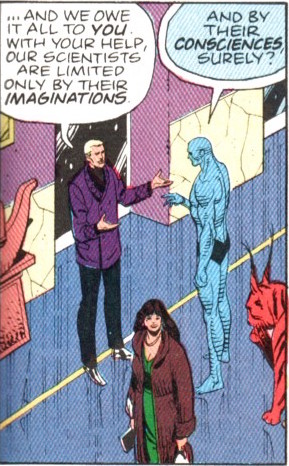 It is October 1987. Moore is sitting down to dinner after a Glasgow signing to promote Watchmen. At the table is Grant Morrison, a neophyte comics writer. It is the only meeting between them that Moore recalls, although he had given Morrison advice at a 1983 Glasgow comic mart when Morrison was on the cusp of transitioning from a failed rock star to a successful comics writer. Moore will eventually, to Morrison’s chagrin, describe him as an “aspiring” comics writer at the time of this meeting, one of many swipes he will take at Morrison over the years. They talk about vegetarianism. (“Sometimes you can’t live with the contradictions, Grant,” Morrison recalls him saying.)
It is October 1987. Moore is sitting down to dinner after a Glasgow signing to promote Watchmen. At the table is Grant Morrison, a neophyte comics writer. It is the only meeting between them that Moore recalls, although he had given Morrison advice at a 1983 Glasgow comic mart when Morrison was on the cusp of transitioning from a failed rock star to a successful comics writer. Moore will eventually, to Morrison’s chagrin, describe him as an “aspiring” comics writer at the time of this meeting, one of many swipes he will take at Morrison over the years. They talk about vegetarianism. (“Sometimes you can’t live with the contradictions, Grant,” Morrison recalls him saying.)
It’s Christmas 2013. Alan Moore, in the course of an interview, offers the stunning transition, “this, I think, leaves us only with the herpes-like persistence of Grant Morrison” before launching into a four-thousand word account of his history with Morrison and concluding that he would prefer if “admirers of Grant Morrison’s work would please stop reading mine, as I don’t think it fair that my respect and affection for my own readership should be compromised in any way by people that I largely believe to be shallow and undiscriminating.”
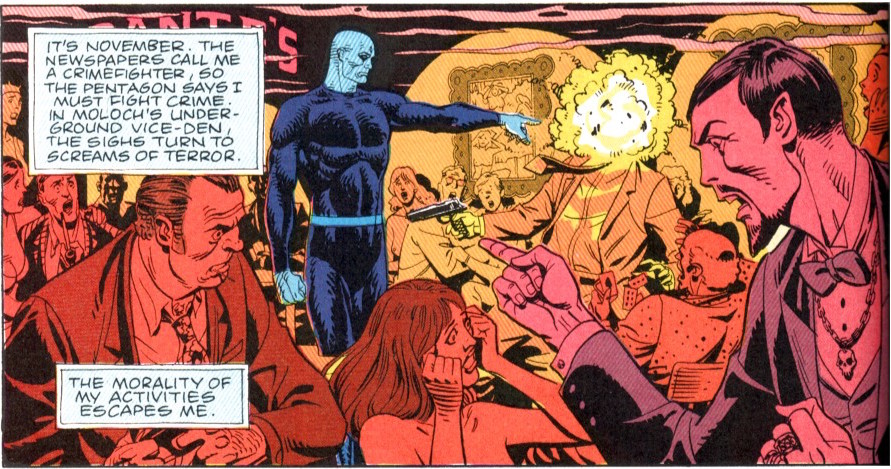 It’s summer, 1992. Alan Moore is thirty-eight. Just a few years out from the twin smoldering wreckages of Big Numbers and his first marriage, he takes a call from Jim Valentino at Image Comics. Moore is unimpressed with the Image output, thinking, “I’ve been away for five years, and comics have turned into some bizarre super-steroid-mutant hybrid that I’ve got no familiarity with at all,” but the business model of Image appeals to him, and the failure of Big Numbers along with a relatively fallow period in Moore’s output means he needs the money, and so he throws himself into “teaching myself this new language and trying to understand this new audience.” He ends up creating 1963 with Steve Bissette and Rick Veitch, a colorful pastiche of vintage Marvel comics written in explicit contrast to the post-Watchmen style (largely embodied by Image itself) of violent and cynical comics.
It’s summer, 1992. Alan Moore is thirty-eight. Just a few years out from the twin smoldering wreckages of Big Numbers and his first marriage, he takes a call from Jim Valentino at Image Comics. Moore is unimpressed with the Image output, thinking, “I’ve been away for five years, and comics have turned into some bizarre super-steroid-mutant hybrid that I’ve got no familiarity with at all,” but the business model of Image appeals to him, and the failure of Big Numbers along with a relatively fallow period in Moore’s output means he needs the money, and so he throws himself into “teaching myself this new language and trying to understand this new audience.” He ends up creating 1963 with Steve Bissette and Rick Veitch, a colorful pastiche of vintage Marvel comics written in explicit contrast to the post-Watchmen style (largely embodied by Image itself) of violent and cynical comics.
It’s 1996, and Alan Moore is calling Steve Bissette to end their friendship over comments Bissette made in an interview with The Comics Journal, including some suggesting Moore had lost interest in 1963.
It’s 2010, and the last hope that the final installment of the project, an intended crossover between the 1963 characters and the rest of the Image line will ever come out finally sputters out.
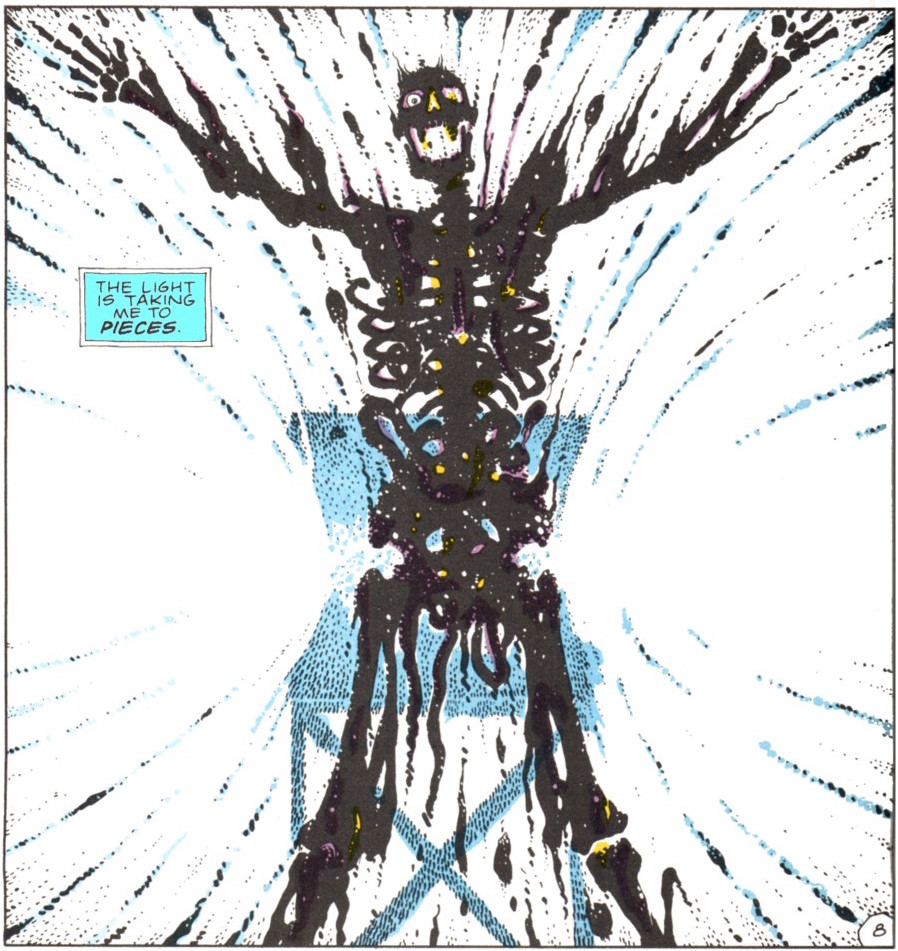 It’s January 7th, 1994. Alan Moore is forty, not two months past impulsively declaring himself to be a magician. He is in London, on Shooter’s Hill, visiting Steve Moore. A psilocybin-infused conversation about the Burroughs/Glysin cut-up method as alchemical process gives way abruptly to spiritual vision. The room itself opens and unfolds into some higher space, the chain of conversation – “an idea that turns out to be connected to another, then another, and the discourse makes its labouring progress upward from one concept to the next” until it reaches some divinity that reveals itself in spite of its unknowability.…
It’s January 7th, 1994. Alan Moore is forty, not two months past impulsively declaring himself to be a magician. He is in London, on Shooter’s Hill, visiting Steve Moore. A psilocybin-infused conversation about the Burroughs/Glysin cut-up method as alchemical process gives way abruptly to spiritual vision. The room itself opens and unfolds into some higher space, the chain of conversation – “an idea that turns out to be connected to another, then another, and the discourse makes its labouring progress upward from one concept to the next” until it reaches some divinity that reveals itself in spite of its unknowability.…

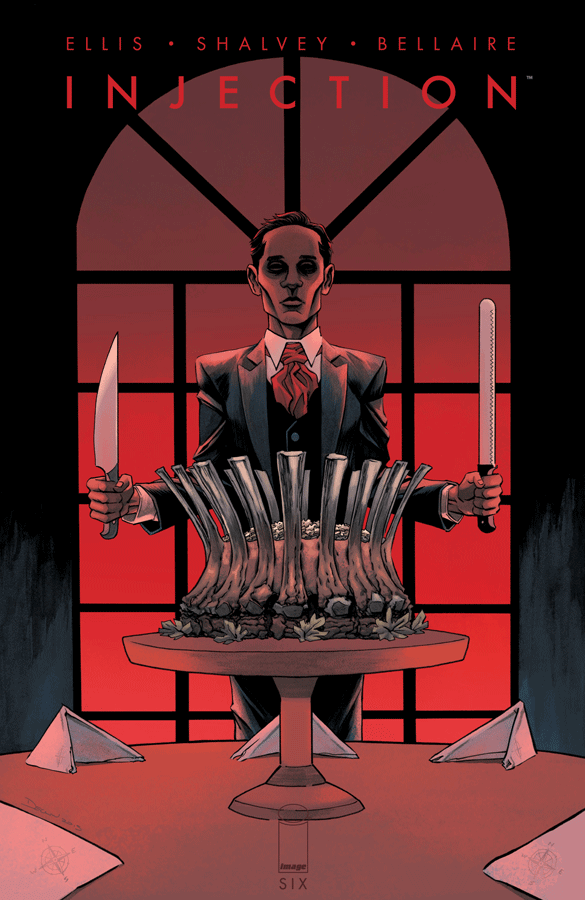 Digital edition codes will work for the first person to try to use them at
Digital edition codes will work for the first person to try to use them at  I’m joined by Chris O’Leary of
I’m joined by Chris O’Leary of  Seth Aaron Hershman revisits
Seth Aaron Hershman revisits 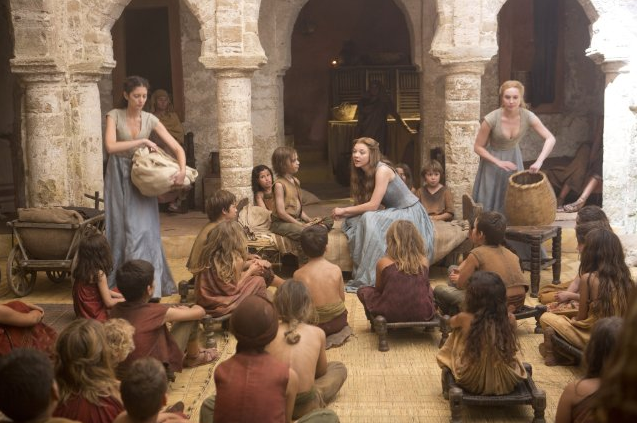
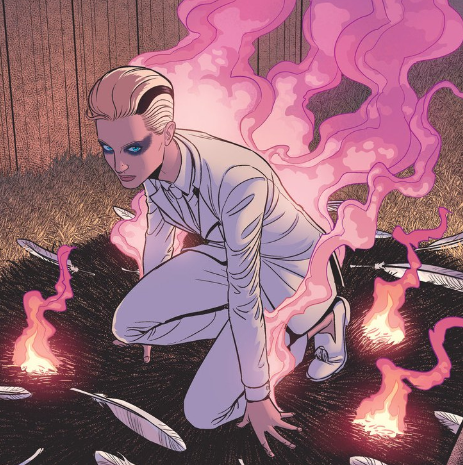 Monday’s regularly scheduled post will be up at noon EST.
Monday’s regularly scheduled post will be up at noon EST.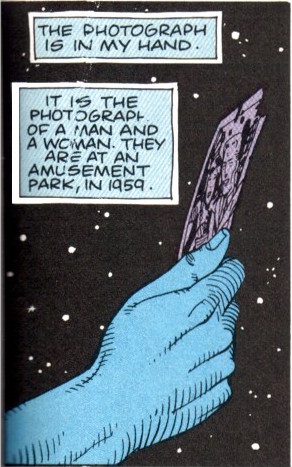 It is January, 1988. Alan Moore is thirty-three, and writing the introduction to the collected edition of Watchmen. His relationship with the publisher is in tatters, a fact he alludes to only vaguely when he notes that it is “the very last work that I expect to be doing upon Watchmen for the foreseeable future.” He looks back to 1984, when the idea originated, and the giddy enthusiasm of it all. And yet there is something he cannot quite locate in this. He notes that at the start “we wanted to do a novel and unusual super-hero comic that allowed us the opportunity to try out a few new storytelling ideas along the way. What we ended up with was substantially more than that.” But he cannot pin down the transition. Instead he describes a growing realization of the story’s complexity and scale, but without a sense that the realization had an end point. Instead, “there was the mounting suspicion (at least on my part) that we might have bitten off more than we could chew, that we might not be able to resolve all these momentous strands of narrative and meaning that seemed to be springing up wherever we looked, that we might be left at the end of the day with a big, messy, steaming bowl of semiotic spaghetti.” But even when the project ended. But even now, in 1988, Moore is lost in the process, saying that it is only now, in writing the introduction, that he realizes “how dazed a state I’d spent that year in, as if I’d been slam dancing with a bunch of rhinos and the concussion was only just starting to clear up,” a claim that oddly undercuts itself; the daze clearly extending beyond the year, simultaneously located “now, twelve months after” he finished the final script and in the past, as indicated by the past tense in the concussion metaphor.
It is January, 1988. Alan Moore is thirty-three, and writing the introduction to the collected edition of Watchmen. His relationship with the publisher is in tatters, a fact he alludes to only vaguely when he notes that it is “the very last work that I expect to be doing upon Watchmen for the foreseeable future.” He looks back to 1984, when the idea originated, and the giddy enthusiasm of it all. And yet there is something he cannot quite locate in this. He notes that at the start “we wanted to do a novel and unusual super-hero comic that allowed us the opportunity to try out a few new storytelling ideas along the way. What we ended up with was substantially more than that.” But he cannot pin down the transition. Instead he describes a growing realization of the story’s complexity and scale, but without a sense that the realization had an end point. Instead, “there was the mounting suspicion (at least on my part) that we might have bitten off more than we could chew, that we might not be able to resolve all these momentous strands of narrative and meaning that seemed to be springing up wherever we looked, that we might be left at the end of the day with a big, messy, steaming bowl of semiotic spaghetti.” But even when the project ended. But even now, in 1988, Moore is lost in the process, saying that it is only now, in writing the introduction, that he realizes “how dazed a state I’d spent that year in, as if I’d been slam dancing with a bunch of rhinos and the concussion was only just starting to clear up,” a claim that oddly undercuts itself; the daze clearly extending beyond the year, simultaneously located “now, twelve months after” he finished the final script and in the past, as indicated by the past tense in the concussion metaphor.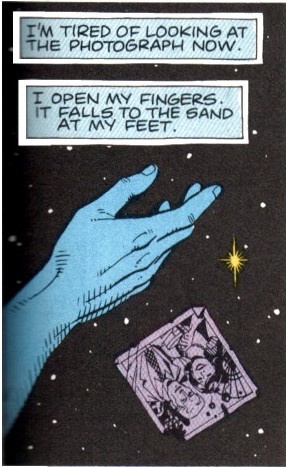 A similar temporal ambivalence exists in the previously discussed description of how his “nostalgia for the [superhero] genre cracked and shattered somewhere along the way and all the sweet old musk inside just leaked out and evaporated,” a statement in which Moore is clearly lying, albeit as much to himself as the reader, the description of the “sweet old musk” evoking precisely what he says he has lost, so that the sentence offers the very experience it exists to reject. Moore casts superheroes away, but in doing so only draws them back in, a tension implicit in the very idea of nostalgia, which is of course an intense feeling for a thing that one is not actually experiencing at the time. He is nostalgic for his nostalgia, relishing in the scent of its memory even as he pushes the genre away, grimly certain in the necessity of all his burnt bridges.…
A similar temporal ambivalence exists in the previously discussed description of how his “nostalgia for the [superhero] genre cracked and shattered somewhere along the way and all the sweet old musk inside just leaked out and evaporated,” a statement in which Moore is clearly lying, albeit as much to himself as the reader, the description of the “sweet old musk” evoking precisely what he says he has lost, so that the sentence offers the very experience it exists to reject. Moore casts superheroes away, but in doing so only draws them back in, a tension implicit in the very idea of nostalgia, which is of course an intense feeling for a thing that one is not actually experiencing at the time. He is nostalgic for his nostalgia, relishing in the scent of its memory even as he pushes the genre away, grimly certain in the necessity of all his burnt bridges.…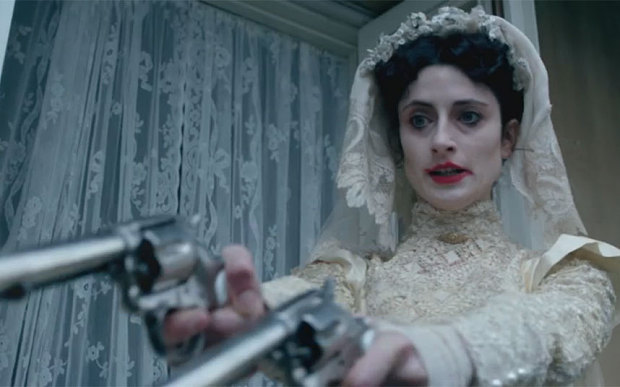 I’m joined for this by Jon Blum, the other half of the legendary Ormanblum from whence the best Doctor Who novels emerge. We talk Sherlock, then do a nice career-spanning interview that includes the sordid tale of the fourth-best Zygon story ever filmed. It’s good stuff, and
I’m joined for this by Jon Blum, the other half of the legendary Ormanblum from whence the best Doctor Who novels emerge. We talk Sherlock, then do a nice career-spanning interview that includes the sordid tale of the fourth-best Zygon story ever filmed. It’s good stuff, and 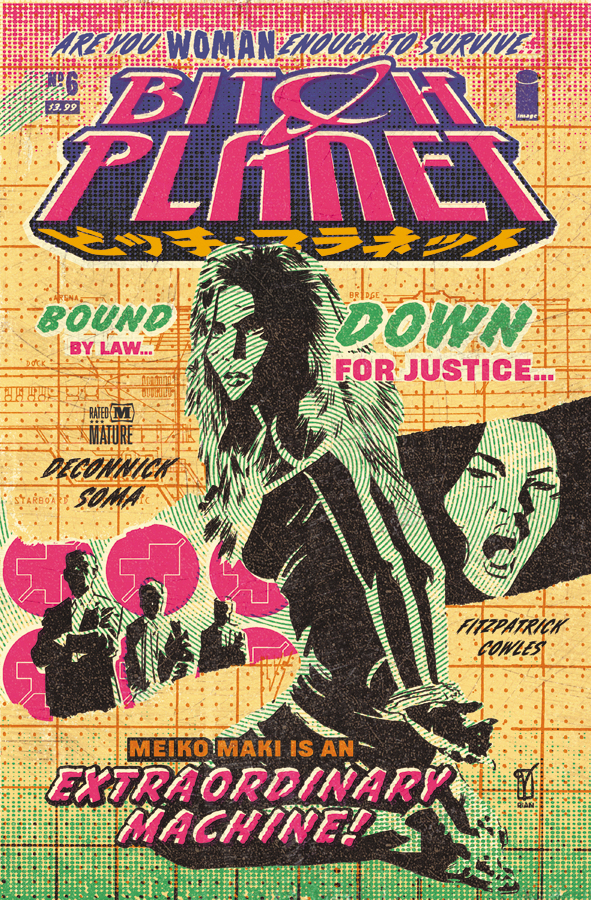 First off, and unrelated to comics, I guested on this week’s installment of Oi! Spaceman, where I talk Moffat and feminism, Mawdryn Undead, and Vox Day. It was great fun, and
First off, and unrelated to comics, I guested on this week’s installment of Oi! Spaceman, where I talk Moffat and feminism, Mawdryn Undead, and Vox Day. It was great fun, and 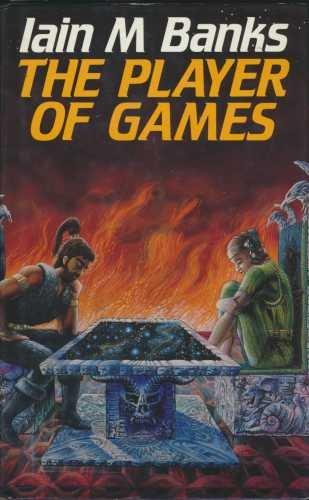 With The Player of Games, Banks’s series immediately becomes the legend of science fiction that it is. Simply put, it’s one of the most compelling premises in science fiction, on par with A Canticle for Leibowitz or The Restaurant at the End of the Universe: a post-scarcity utopia that conducts warfare via a board game.
With The Player of Games, Banks’s series immediately becomes the legend of science fiction that it is. Simply put, it’s one of the most compelling premises in science fiction, on par with A Canticle for Leibowitz or The Restaurant at the End of the Universe: a post-scarcity utopia that conducts warfare via a board game.